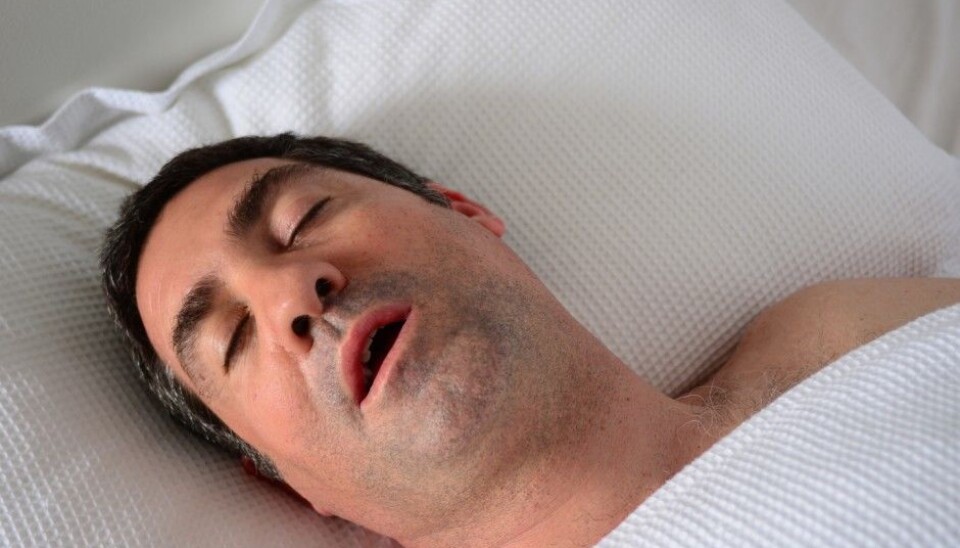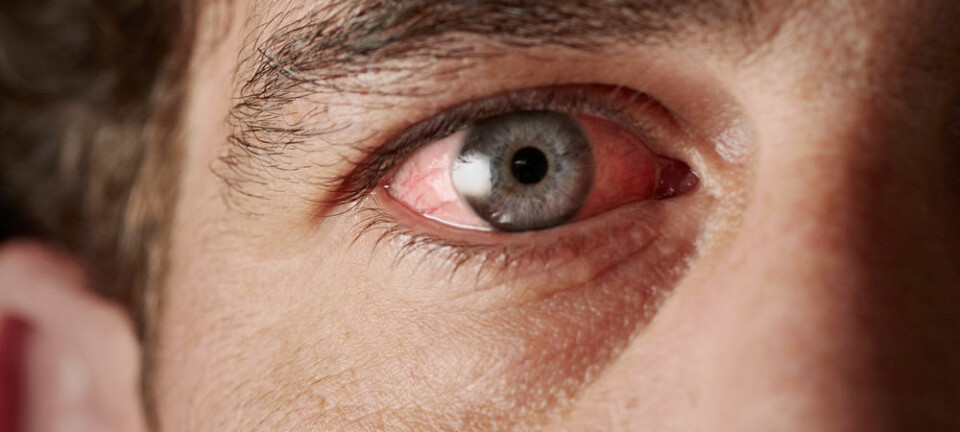
Better sleep without tonsils
Surgery can provide promising results for sleep apnoea, according to a Swedish study. But a chief physician says such surgery only works for some patients and the effect declines rapidly.
At least 16 percent of adult Norwegian sleep poorly because they breathe irregularly.
Snoring and sleep apnoea plague many at night. They suddenly stop breathing for at least ten seconds at a time while sleeping.
Often they don’t notice their problem themselves. After all, they are asleep while it happens. The cessation of breathing usually only causes a partial wake-up.
People with sleep apnoea are commonly unaware of these pauses and the loud snoring and sharp snorts that go along with it. But they might get an elbow in the ribs and a complaint from partners who share their bed. A related problem is shallow breathing, called hypopnea.
Sufferers of these disorders wake up in the morning unrested, as apnoea disturbs the normal cycles of sleep and puts a strain on the heart. Long term, sleep apnoea can trigger other diseases. Patients can also suffer memory problems, poor concentration and daytime drowsiness.
Sometimes the tonsils are at the heart of the problem ― they obstruct breathing. If you have large tonsils and sleep apnoea, surgery can be a solution, according to a small Swedish study.
All 28 participants in the study showed improvements after the operation.
All of them lowered their apnoea-hypopnea episodes by at least five per hour.
Six months later, 18 of them were rid of their sleep apnoea problems.
Got less fatigued
Their breathing was monitored while they slept. The flow of air into their lungs was much better after the operation.
The patients were asked how they felt and they reported less daytime drowsiness than before.
Thorbjörn Holmlund at Umeå University conducted research on one of the two types of sleep apnea, called obstructive sleep apnoea. This is caused by the entrance to the air passage being obstructed, in some cases by the tonsils.
About 22 percent of Swedish men have this problem in some form.
“Not everyone suffers from their apnoeas, but many do. More should probably be receiving treatment,” writes Holmlund in an e-mail to ScienceNordic’s Norwegian partner forskning.no.
Side-effects with operations
Few of the participants in Holmlund’s study suffered side-effects, but one had some problems with bleeding and another had numbness of the tongue.
However, another, larger study by Holmlund shows such surgical procedures do entail the possibility of side-effects including haemorrhaging, infections and problems swallowing. This is more likely to happen among patients whose operations combine the removal of tonsils with surgery on the soft palate.
In the smaller study the patients only had their tonsils removed. None of them had any problems swallowing afterwards.
A Nordic country Health Technology Assessment (HTA) on sleep apnoea treatment was completed about a decade ago. The Norwegian Institute of Public Health’s Knowledge Centre for the Health Services helped assess the research.
The HTA then found that surgery entailed a rather large risk of side-effects. The report also found that surgical treatment did not work particularly well.
Both Swedes and Norwegians with sleep apnoea were commonly given surgery but that is less common now, partly because of the side-effect risks.
Holmlund thinks this reluctance to use the scalpel ties in with a lack of research on the alternative types of medical treatment. He recommends surgery for those who have very large tonsils.
Limited study
Doctors in Norway now tend to recommend other treatment than surgery, says Chief Physician Sverre Lehmann at Haukeland University Hospital in Bergen.
The most common response is to use a CPAP mask (short for Continuous Positive Airway Pressure). Or a sleep apnoea mouthpiece can do the job for those with more moderate cases of the disorder.
Lehmann thinks that Holmgren’s study shows that removing the tonsils only works for certain types of patients and is not so indicative regarding surgery for apnoea patients in general.
“Most of those who have sleep apnoea as adults do not have especially large tonsils,” he points out in e-mail to forskning.no.
Many children have oversized tonsils and among them he has seen good results with surgery.
The effect decreases
Lehmann thinks the recent Swedish study has certain weaknesses. There was no control group. In other words, Holmlund has not compared the patients with ones who were not operated. So nothing is known about how well they would have slept with alternatives to an operation.
Other factors could also count in.
“In the follow-up period, they could also have made changes in smoking habits, use of alcohol or sleeping medications managed to lose weight,” writes Lehmann.
These are risk factors that tie in with apnoea.
Lehmann also asserts that the follow-up period of six months after the operations is relatively short.
“Unfortunately, longer follow-ups show that the effects rather often abate,” he writes.
------------------------------------------------
Read the Norwegian version of this article at forskning.no
Translated by: Glenn Ostling








